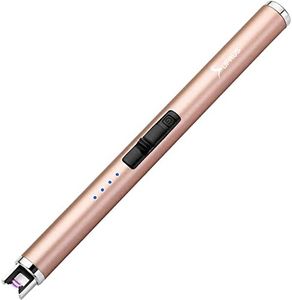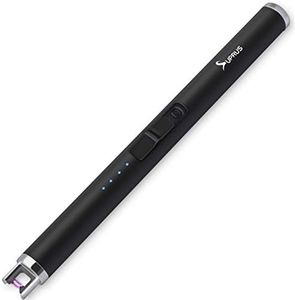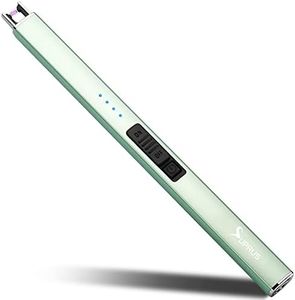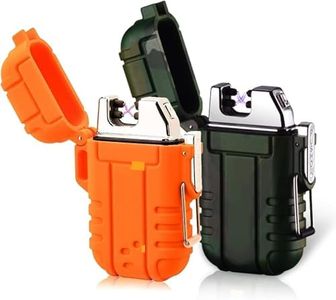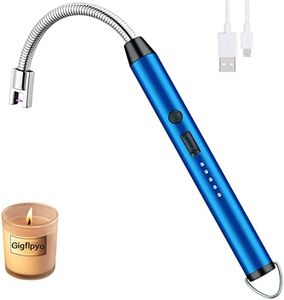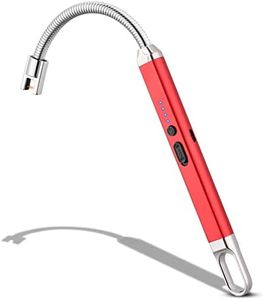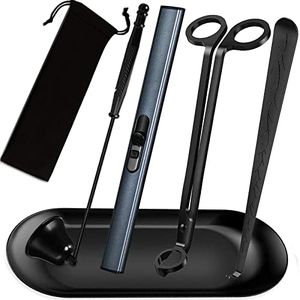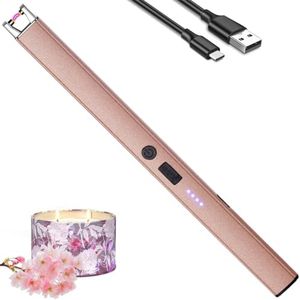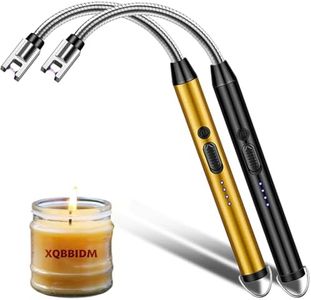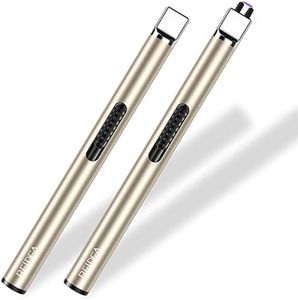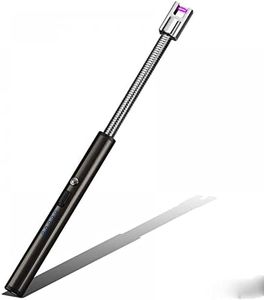We Use CookiesWe use cookies to enhance the security, performance,
functionality and for analytical and promotional activities. By continuing to browse this site you
are agreeing to our privacy policy
10 Best Electric Candle Lighter
From leading brands and best sellers available on the web.Buying Guide for the Best Electric Candle Lighter
Choosing an electric candle lighter can make lighting candles, grills, and even fireplaces much easier and safer than using traditional matches or lighters. Electric candle lighters use electricity to generate a small plasma arc or heat, which eliminates the need for flames and reduces the risk of burns. To pick the best one for you, it's helpful to understand several specifications that can impact how well the lighter suits your needs and lifestyle.Battery Type and CapacityThe battery type and capacity determine how often you need to recharge the electric candle lighter and how powerful it will be. Most electric lighters use rechargeable lithium-ion batteries. The capacity is often measured in milliampere-hours (mAh). A higher capacity means the lighter will last longer between charges, which can be useful if you intend to use it frequently or in places where charging is inconvenient. For everyday household use, a lower capacity may suffice, while those using it for outdoor activities might prefer a higher capacity for longer performance.
Ignition MechanismElectric candle lighters generally work with either a plasma arc or a heated coil. The plasma arc creates a small, visible arc of electricity, while the coil heats up to produce an ignition point. Plasma arc types are typically windproof and perform better outdoors, while heated coils might be simpler and quieter. If you want a windproof and fast lighter, the plasma arc style is often preferable. If you care more about simplicity and noise-free operation and will only use it indoors, a heated coil could be a good option.
Safety FeaturesSafety features such as auto shut-off, child lock, and protection against overcharging help prevent accidents and prolong the life of your lighter. Auto shut-off ensures the lighter turns off after a few seconds to prevent overheating. Child locks make it difficult for children to operate the lighter, and overcharge protection safeguards the battery. If you live with kids or plan to give the lighter as a gift, prioritizing safety features is a wise choice.
Neck Length and FlexibilityThe neck is the long part you use to reach the wick or surface you want to light. It can be rigid or flexible. A longer or flexible neck allows you to access hard-to-reach areas, such as deep candle jars or grills. If you frequently light deeply set candles or need more maneuverability, choose a lighter with a long, flexible neck. For simple candle lighting where reach is not an issue, a fixed, shorter neck will usually suffice.
Charging MethodMost electric candle lighters use USB charging, but the type of USB—such as micro USB or USB-C—can affect convenience and charging speed. If you already own several devices with a similar charging port, picking a lighter that matches that method can reduce cable clutter and make charging simpler. USB-C generally provides faster charging than micro USB, but either can work for most general uses.
Build Quality and MaterialThe build quality and material affect the durability and feel of the lighter. Common materials include plastic and metal, with metal typically being more robust. A sturdier build is preferable if you expect to drop the lighter or use it outdoors. If portability and light weight are more important, plastic options can still offer good service.
